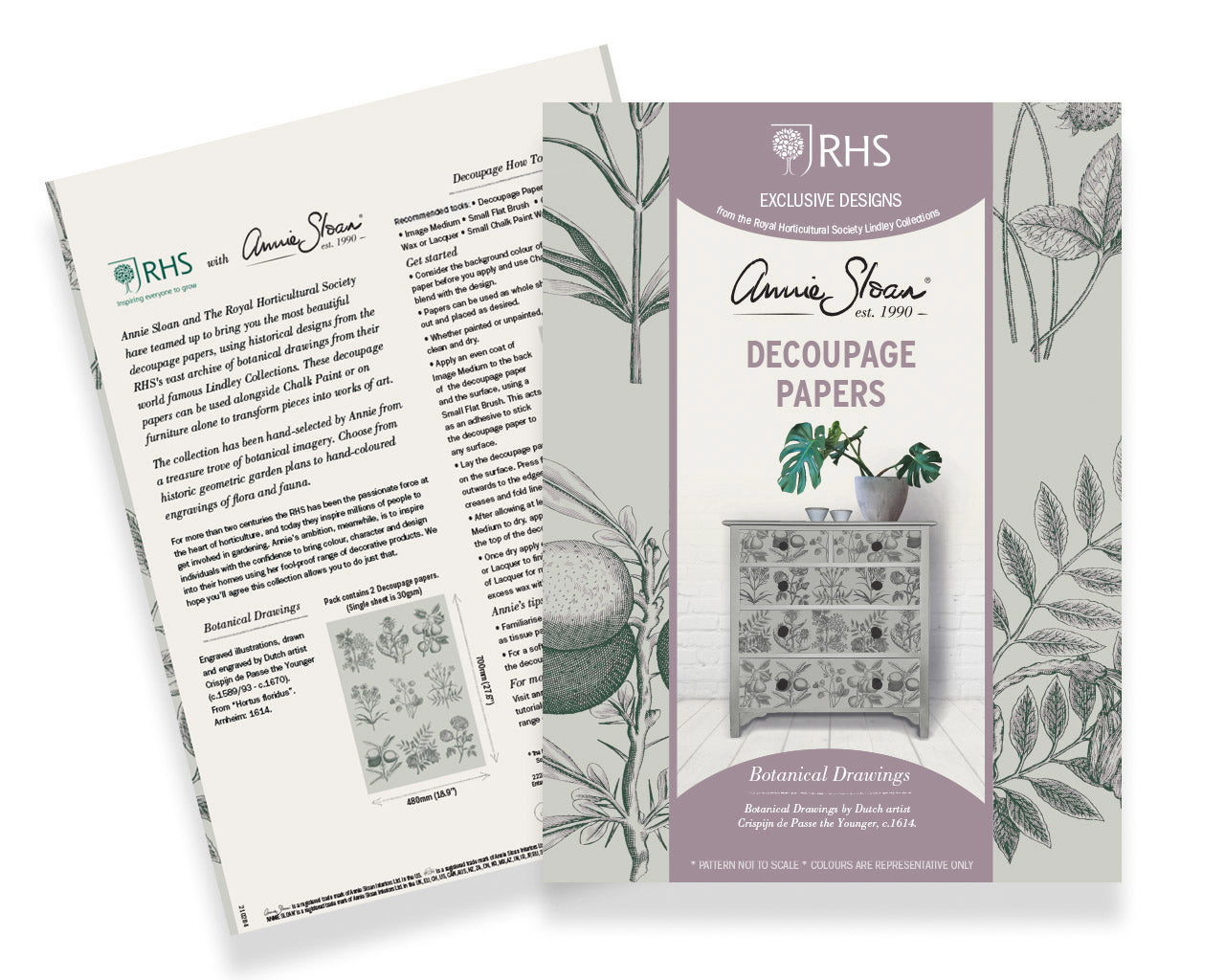Annie Sloan
Botanical drawings (48x68cm) - Annie Sloan découpage
Botanical drawings (48x68cm) - Annie Sloan découpage
Out of stock
Couldn't load pickup availability
This botanical sketch paper is a simple, elegant and charming design featuring thistles, pears, strawberries, lemons and more. The images are selected from "Botanical Drawings" by Crispijn de Passe de Jonge (c.1589/93-c.1670).
Crispijn de Passe the Younger was born into a dynasty of graphic artists and learned the trade of engraver, draftsman and graphic artist from his father Crispijn the Elder. This is one of the earliest works recorded in the collaboration between Annie Sloan and the Royal Horticultural Society (RHS). The designs are printed on a subdued background of Old White, which is also available as Chalk Paint® .
Read on below to learn more about the découpage technique.
Découpage is a technique that was already used in the 18th century. The word découpage comes from the French term découper, which means to cut. Découpage is a technique in which pieces of furniture, walls or other accessories are decorated by gluing (colored) paper or cut-out motifs onto them . The pieces of paper or cut-out figures are glued to the object with special decoupage gel. You can apply the cécoupage technique on all kinds of different surfaces.
If you've never decoupled before, don't be afraid! It's actually quite simple. Below we explain step by step how to apply the découpage technique.
Supplies:
- Decoupage paper
- Decoupage gel
- Scissors or craft knife
- Brush or sponge brush
STEP 1
First you choose an object or piece of furniture that you want to glue decoupage paper to. When you start decoupling for the first time, it is advisable to choose an object that has a straight and flat surface, for example: a storage box, the inside or side of chests of drawers, the top of a table,...
As you gain confidence, you will start to see all the possibilities. As long as you have the right glue for the surface, you can decouple it!
STEP 2
Prepare the surface well. Remove any old paint residue and sand rough surfaces smooth. If you want to decouple a smooth surface such as glass or metal, it is also good to lightly sand it. Then wipe the surface with a damp cloth and make sure it is clean, free of grease and dry.
If the découpage paper you chose is light, the color of the furniture may show through. That is why you may choose to first paint the surface in a complementary base color.
STEP 3
Découpage gel comes in a matte or glossy finish. Decide what type of finish you want and spread a layer of decoupage gel over the surface with a brush. A brush can leave lines. If you want a smoother look, a sponge brush is a better alternative.
STEP 4
Cut your design to size and lay out the paper. Try to be as precise as possible so that you do not have to move the paper afterwards. After all, there is a good chance that it will tear.
Use a flat tool, such as a card or transfer stick, to very carefully smooth out any wrinkles or air bubbles. You can also use a wad of plastic wrap to push out air bubbles. This way you are less likely to push a tear into the paper.
STEP 5
Then apply a layer of decoupage gel on top of the design, making sure everything is covered. Apply 1 to 3 more coats of gel until you achieve the desired finish.
And you're done...!






